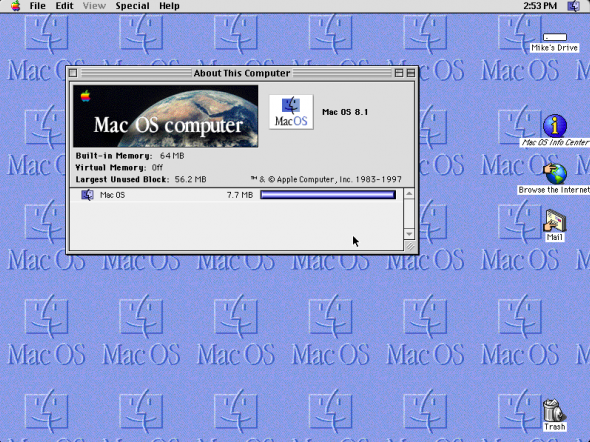
| Fiche technique | |
|---|---|
| Type de produit : | Système d'exploitation |
| Auteur : | Apple Computer |
| Date de publication : | Janvier 1998 |
Introduction
Le système d'exploitation Mac OS 8.1 est la version succédant au Mac OS 8.0. Sorti le 19 janvier 1998, le Mac OS 8.1 était la dernière version à s'exécuter sur les ordinateurs Macintosh équipés d'un microprocesseur de la famille Motorola 68000. Il a introduit la prise en charge du format de système de fichiers HFS Plus, prenant en charge des fichiers de grande taille, des noms de fichiers plus longs et utilisait plus efficacement l'espace sur des disques plus grands grâce à l'utilisation d'une taille de bloc plus petite. Il s'agit de la première version pouvant exécuter des applications Carbon.
Dernière mise à jour : Samedi, le 5 juin 2021